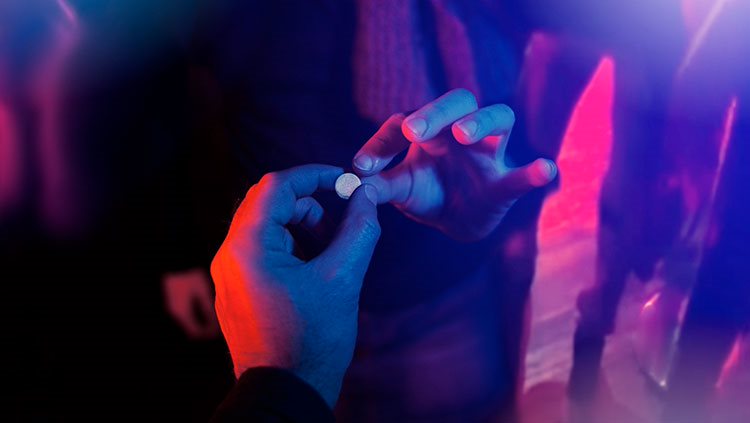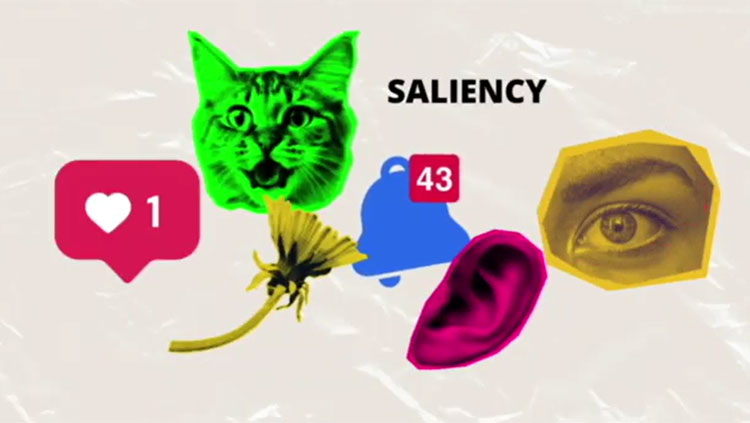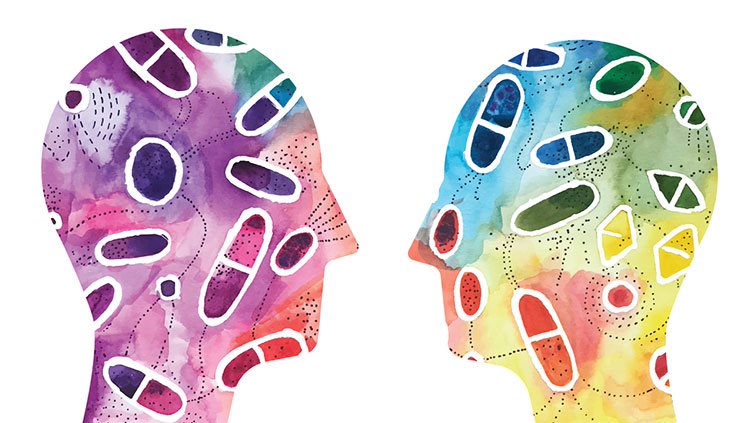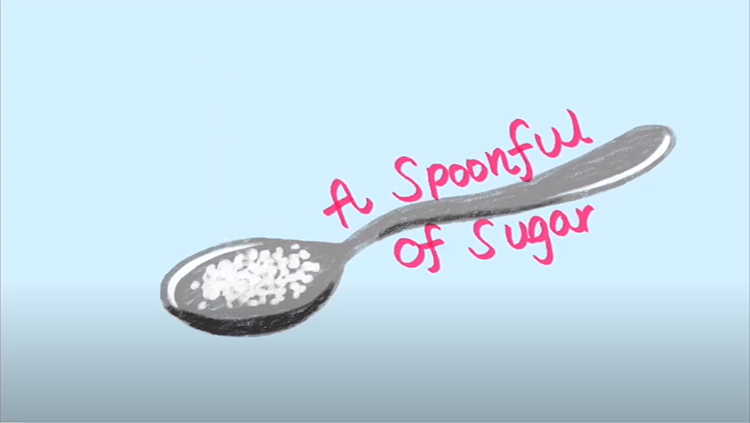The Effects of Psychotimulants
- Reviewed16 Feb 2023
- Author Alison Davis
- Source BrainFacts/SfN

Some drugs are meant to bring you up, which can help you feel more awake and focused. However, what goes up must come down.
Psychostimulants are chemicals that excite the brain, providing a temporary boost to physical and/or mental function. One very common psychostimulant is caffeine, and another is nicotine. While both are legal and commercially available, nicotine is highly addictive and can create secondary problems as the main ingredient in cancer-causing cigarettes and chewing tobacco.
Other psychostimulants are in commonly prescribed medications that are sometimes abused recreationally. For example, doctors prescribe amphetamine (Adderall) and methylphenidate (Ritalin or Concerta) to treat ADHD and the sleeping disorder narcolepsy, but these drugs have migrated to the black market and are widely sold illegally. Amphetamines, including methylphenidate, are frequently abused by high school and college students. One study determined that, by their senior year, two-thirds of college students had been offered prescription stimulants and one-third had used them non-medically to increase focus and enhance concentration.
Illegal psychostimulants that are made in makeshift drug labs and sold on the street include cocaine and methamphetamine, or “meth.” Abusers sometimes smoke these — in particular, cocaine (crack) and crystal methamphetamine (crystal meth) — to experience a rush of euphoria and feelings of power and self-confidence. Typically, the effects are short-lived, prompting repeated use and physical harm to various organs, including the heart. Meth in particular is quite destructive to the brain itself, as it generates harmful substances called free radicals that destroy dopamine neurons.
In the brain, psychostimulants work by flooding the brain’s reward system with dopamine, the “usual suspect” in most addictions and many psychiatric disorders. Most psychostimulants act and wear off quickly, leading to a quick high and then an unpleasant “crash” that encourages more use and can be overwhelming, both physically and mentally. Meth is especially addictive, entering the brain very quickly and staying there longer than other psychostimulants. People who continue abusing psychostimulants develop a tolerance, needing more and more to get high. Over time, these drugs damage the body’s ability to release normal amounts of dopamine, causing a range of health problems, starting with a lack of drive to engage in activities that were once pleasurable.
Neuroscientists are working to figure out how to prevent and treat addiction to psychostimulants. In the course of their work, they have learned a great deal about the brain’s normal function in motivated behavior. For example, in addition to increasing dopamine in the reward system, psychostimulants act in the prefrontal cortex to promote arousal and quicken our thinking. Studies show that low doses of psychostimulants (much less than taken in drug abuse) actually improve the brain’s executive function (as in some ADHD treatments), helping with impulse and emotional control, planning and organizing, and productivity. Such low doses do not lead to tolerance and addiction, but high doses can impair brain function.
Treatments
Currently the best treatments for psychostimulant addiction are cognitive behavioral therapy and motivational incentives, both of which help steer users away from situations that trigger drug use. So far, no effective drugs have been approved for cocaine or meth addiction. However, now that scientists better understand how psychostimulants work in the brain, they are pursuing treatment strategies that target many neurotransmitters separately to quell cravings and withdrawal symptoms. The neurotransmitter systems include serotonin, glutamate, and GABA. Experimental meth treatments currently focus on entirely new targets, such as the brain’s immune cells (microglia) and oxytocin.
Adapted from the 8th edition of Brain Facts by Alison Davis.
CONTENT PROVIDED BY
BrainFacts/SfN
References
Baumann, M. H., Solis, E., Jr, Watterson, L. R., Marusich, J. A., Fantegrossi, W. E., & Wiley, J. L. (2014). Baths salts, spice, and related designer drugs: the science behind the headlines. The Journal of Neuroscience. 34(46), 15150–15158. https://doi.org/10.1523/JNEUROSCI.3223-14.2014
Centers for Disease Control and Prevention & National Center for Injury Prevention and Control. (2017). Understanding Drug Overdoses and Deaths. https://www.cdc.gov/drugoverdose/epidemic/index.html
Garnier-Dykstra, L. M., Caldeira, K. M., Vincent, K. B., O'Grady, K. E., & Arria, A. M. (2012). Nonmedical use of prescription stimulants during college: four-year trends in exposure opportunity, use, motives, and sources. Journal of American College Health. 60(3), 226–234. https://doi.org/10.1080/07448481.2011.589876
National Institute on Drug Abuse. (2015). The science behind designer drugs. https://archives.drugabuse.gov/news-events/latest-science/science-behind-designer-drugs
National Institute on Drug Abuse. (2017). Cannabis (Marijuana) DrugFacts. https://www.drugabuse.gov/publications/drugfacts/marijuana
National Institute on Drug Abuse. (2017). Cannabis (Marijuana) Research Report: Is marijuana safe and effective as medicine? https://www.drugabuse.gov/publications/drugfacts/marijuana-medicine
National Institute on Drug Abuse. (2017). Commonly Used Drugs Charts. https://www.drugabuse.gov/drugs-abuse/commonly-abused-drugs-charts
National Institute on Drug Abuse. (2017). Drugs, Brains, and Behavior: The Science of Addiction.
Drugs and the Brain. https://www.drugabuse.gov/publications/drugs-brains-behavior-science-addiction/drugs-brain
National Institute on Drug Abuse. (2017). Heroin DrugFacts. https://www.drugabuse.gov/publications/drugfacts/heroin
National Institute on Drug Abuse. (2017). Methamphetamine DrugFacts. https://www.drugabuse.gov/publications/drugfacts/methamphetamine
National Institute on Drug Abuse. (2018, July 2). The Science of Drug Use and Addiction: The Basics. https://archives.drugabuse.gov/publications/media-guide/science-drug-use-addiction-basics
National Institute on Drug Abuse. (2022). Tobacco, Nicotine, and E-Cigarettes Research Report
What are treatments for tobacco dependence? https://nida.nih.gov/publications/research-reports/tobacco-nicotine-e-cigarettes/what-are-treatments-tobacco-dependence
National Institute on Alcohol Abuse and Alcoholism. (2017). Alcohol Facts and Statistics. https://www.niaaa.nih.gov/alcohol-health/overview-alcohol-consumption/alcohol-facts-and-statistics



















